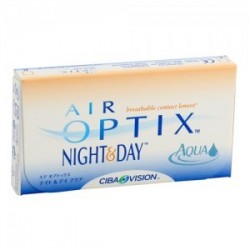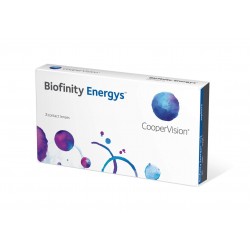Contact Lenses and Common Eye Problems

Some contact lenses are designed to treat certain eye diseases or conditions. On the other hand, some eye infections or disorders force people to refrain from using contacts. Stay with us as we reveal eight common eye problems that may or may not allow you to wear lenses.
Macular Degeneration
A condition caused by the deterioration of the macula or the central section of the retina is referred to as age-related macular degeneration (AMD). It mostly affects the central vision of the eye, causing distortion, blurring, or permanent loss of vision.
AMD occurs mostly among people above 60, hence the name of the condition “age-related macular degeneration”. Macular degeneration among younger people is referred to as Stargardt disease.
The two basic types of AMD are the dry form and the wet form. Dry form AMD is caused by protein buildup in the macula, losing the function of the retinal cells. Meanwhile, wet form AMD is due to blood leaking from the tiny vessels in the retina, which causes severe central vision loss compared to dry AMD.
As of this writing, there’s still no cure for AMD. However, taking prescribed medication and changing lifestyles like exercise and proper diet may help slow down the progression. Regular eye checkups may also help manage the progression of macular degeneration.
When it comes to contact lenses, they can’t relieve AMD. So, you need to find other ways on how to deal with the condition effectively.
Diabetic Retinopathy
This medical condition is a complication from diabetes that affects the retina when glucose level changes and blood vessels leak, blurring the vision and possibly increasing the chances of permanent blindness. Progressive diabetic retinopathy includes:
- Floaters or spots in your vision
- Impaired colour perception
- Blurriness
- Vision fluctuation
- Empty or dark sections
- Blindness
Contact lenses, unfortunately, can’t relieve diabetic retinopathy. But, it may still be used by diabetic people. Just make sure to let your doctor check your eyes for corneal abrasions. Wearing contacts if you’re diabetic may be tricky for the lenses should be able to prevent dry eyes and corneal erosions.
Cataract
Simply put, cataract is a condition in which the natural lens of an eye becomes clouded, deriving to progressive blurring and loss of vision. Categories of cataracts are as follows:
- Subcapsular cataract – behind the lens; common to diabetics and people taking high amounts of steroids
- Nuclear cataract – works from deep within the nucleus or the centre of the lens; linked with aging
- Cortical cataract – forms from the periphery and progresses to the middle of the lens
You may still wear contacts while having cataracts to help improve vision. But if the cataract is already progressive, you should opt for surgery. Surgery is painless and simple, and you can still wear contact lenses after the procedure to help correct the refractive error residues.
Glaucoma
This eye condition occurs due to increased pressure in the optic nerves due to fluid buildup, which leads to progressive loss of vision and blindness when not treated. Glaucoma is most common among older people, but it may hit anyone at any age without symptoms. That’s why regular eye checkup is important.
Having glaucoma doesn’t necessarily mean that you have to stop wearing contact lenses. It all depends on the advice of an eye doctor.
Wearing contacts, however, depends on the type of treatment you use in controlling the progression of glaucoma. The most common treatment, which is medicated eye drops, requires you to remove the lenses first. Changes in the prescription may vary from time to time, so be certain to regularly update it.
Retinal Degeneration
This medical condition refers to retinal deterioration due to the eye cells’ gradual death. It may lead to blurriness, progressive loss of vision, and then blindness. Diseases related to retinal degeneration include:
- Retinitis pigmentosa
- Macular degeneration
- Diabetic retinopathy
- Retrolental fibroplasia
- Macular edema
- Retinal detachment
Wearing contact lenses depends on the need to correct a specific retinal disease.
Conjunctivitis
Pink eye, or conjunctivitis, refers to a condition wherein the thin membrane between your eyes and eyelids called conjunctiva are inflamed or swollen caused by bacteria, viruses, or allergens.
The symptoms of conjunctivitis include:
- Pink or red discolouration of the white areas
- Itchiness
- Swollen eyelids
- Increased light sensitivity
- Excessive tearing
If you experience some of the symptoms, you should stop wearing contacts immediately to avoid damaging your cornea further. Practice social distancing, and visit an eye specialist. The doctor will recommend the right medication for the type of conjunctivitis you have. You can wear your contact lenses again when the treatment is complete.
Astigmatism
Astigmatism happens if your eyeball’s shape is oblong instead of round, causing the light that enters the eye to refract unequally in all directions, thus blurring your vision. When it occurs, especially with frequent headaches, you must visit your doctor.
Like all refractive errors, astigmatism can be corrected using eyeglasses, contact lenses, or laser and other refractive surgeries. Speaking with an eye specialist will help you decide which is the best option for you.
If you choose contact lenses, you should consider these options:
- Toric or soft contact lenses, the most popular type of contacts to correct astigmatism
- Rigid gas permeable contact lenses
- Hybrid or specialty contact lenses, which can be a mix between toric and RGP contacts or whatever your eyes need
Dry Eye Syndrome
This condition occurs when the eyes produce fewer tears or when the tears rapidly evaporate. However, it’s unnecessary to give up on wearing contacts. But, first, you have to visit an eye specialist to identify what causes the dry eyes.
A cause of contacts-related dry eyes is the preservatives from contact solutions or eye drops. Switch to a preservative-free solution or simply use daily disposable lenses instead.
If the problem is the lens itself, here are possible options:
- Change to soft contact lenses with less water content (lenses with high-water content tend to dry out faster)
- Switch to scleral lenses or large-diameter rigid gas-permeable contact lenses
- Orthokeratology or wearing overnight contacts to reshape the cornea and repair refractive errors while sleeping so you don’t have to use contacts when you’re awake
Conclusion
Some eye problems you need to be aware of are macular degeneration, diabetic retinopathy, cataract, glaucoma, retinal degeneration, conjunctivitis, astigmatism, and dry eye syndrome. You may still wear contact lenses if you experience any of these conditions or infections, except for conjunctivitis. Just don’t forget to consult an eye specialist first.
Check available products:
Contact lenses without prescription
Where to Buy Contact Lenses Without a Prescription
If you have no prescription, feel free to order contacts from Contact Lenses 4 Us! We’re ready to ship your purchase regardless of the country you’re in.
See also:
Can You Order Contact Lenses Without a Prescription if You Can’t Leave the
House?
Computer Eye Strain: Can Contact Lenses Prevent It?
Contact Lens Myths You Shouldn’t Take Too Seriously

Air Optix Night & Day (6)
Make Air Optix Night & Day Aqua (6) contact lenses your choice for extended wear. You can keep it on for up to 30 days wi...

Dailies Aqua Comfort Plus Toric (30 lenses)
Dailies AquaComfort Plus Toric contact lenses without prescriptionFight astigmatism without causing any harm to your eyes w...

Biofinity Energys 3 contact lenses
Today’s digital life demands contact lens designed specifically to cater the digital needs. And, this is exactly what Biofi...






